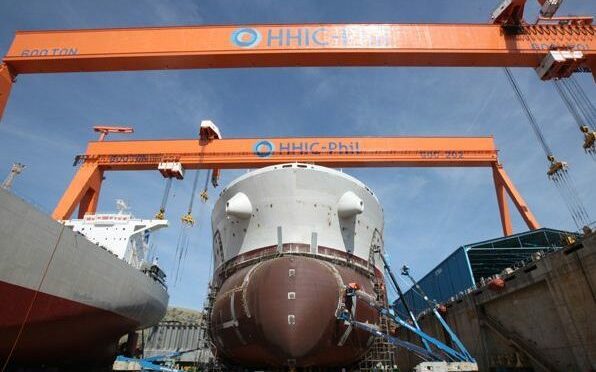
More shipyard capacity will be required in the coming decade, both for newbuilds and retrofits, according to an influential new magazine published at Posidonia in Athens today.
Class society ABS released its 150-page 2024 Outlook today, the sixth in an annual series that gives readers a comprehensive picture of the world fleet moving forward.
New shipbuilders are forecast to emerge from Vietnam, the Philippines and India as global shipyard capacity grows gradually through to 2035, according to the ABS forecast, which uses data from UK consultancy Maritime Strategies International (MSI).
Global shipyard capacity fell to a nadir of 63.4m gt in 2022. Since then, capacity has started to increase once again, driven in large part by the spate of reactivations in recent years. However, thus far, these increases have been relatively modest, with the latest estimates suggesting that capacity only grew by a net 0.75m gt in 2023 to 64.1m gt
ABS expects global capacity to increase to 66.5mgt by the end of this year. By 2030, ABS is forecasting that global shipyard capacity will exceed 71m gt. While this is 12% higher than capacity in 2022, it remains 33% below the historical peak of 107.4m gt in 2011.
Turning to ship repair, ABS reckons current repair yard capacity is expected to meet demand through 2027, however demand for retrofits will continue to increase through 2035, which will require additional repair yard capacity to support fuel conversions (see chart below).
There are around 1,250 active shipyards and ship repair yards. Despite this apparent surplus of potential capacity, the pool of yards capable of carrying out fuel retrofits is significantly smaller. Turnkey fuel retrofits are complex projects, requiring capabilities that are not available at all yards. Due to these requirements, ABS estimates that only a small number of shipyards can undertake fuel retrofits.
Among other key takeaways in the publication the fuel mix forecast for this year and through 2050 suggests methanol comes out on top. The market share of traditional fossil fuels is anticipated by ABS to decline to 15% by the year 2050. The utilisation of methanol gradually rises to 42% by 2050. Utilisation of ammonia is anticipated to increase by 33% by 2050.
“The 2024 outlook delivers unprecedented visibility into the ecosystem of shipping underscoring the collaborative efforts required to retrofit existing fleets and to enhance the capacity of shipyards for new, greener vessels to deliver the scale and pace of change that we will need,” said Christopher Wiernicki, ABS chairman and CEO.
Splash readers can access the full magazine by clicking here.



